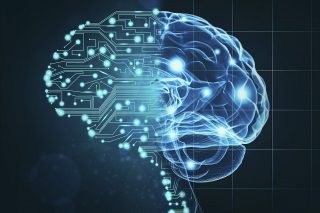What is the main issue when you come up with a great A.I. case and try to implement it in the organization ? It’s getting buy in from the business and aleviating concerns and possible fear from the work force.
It even gets worse when decisions are taken by a machine and the algorithm dynamically assigns tasks to people. I’m experiencing this first hand, right now. Preparing the business is as hard as devising the deep learning algorithm and even more time consuming.
This is an interesting article:
https://www.infosys.com/insights/ai-automation/Pages/people-in-your-organization.aspx
(here is a copy)
Are People in Your Organization Ready for AI
“I see the movement towards AI and robotics as evolutionary, in large part because it is such a sociological leap. The technology may be ready, but we are not – at least, not yet.”
– Geoff Livingstone, President of Tenacity5 Media
As we adopt Artificial Intelligence (AI) and prepare for extensive automation of our industries, organizations and jobs for better revenue and efficiency, business leaders not only need to comprehend the intricacies of the technology but more importantly prepare well to answer questions around governance, employee engagement and people reskilling in an AI-enabled organization.
In a market research commissioned by Infosys, 64% respondents stated that their organization’s future growth is dependent on large-scale AI adoption, however, only 10% of them believed that their organization was currently maximizing the benefits of AI.
Source: AI Maturity Index study polling 1600 IT and Business Decision Makers across seven countries (USA, France, Australia, India, UK, Germany, and China) in November 2016.
Based on our experience with clients and a study of the pioneers, we believe a well-defined AI strategy must include organization change management as an important mechanism to prepare managers and employees both at the project level as well as at the organizational level to unlearn old ways of working and adopt to a more flexible, collaborative work environment through reskilling and upskilling.
The three key elements to consider in an organization change management strategy are:
Augment Leadership to Prepare for Tomorrow’s Management Practices
At the organization level: Every enterprise must develop an AI vision that its employees and leaders believe in. Leaders will play an important role in creating the right perception amongst employees about AI. Rather than view it as a threat, it must be seen as a tool that can amplify human potential. They also need to relook and redefine corporate ethics and code of conduct in view of the impact AI has on the various dimensions of an organization that include process, tools, culture and more. The four key management practices that the future managers need to adopt are:
- Rely on AI as their source of truth for insights
- Focus on problem solving using critical thinking
- Collaborate across diverse networks
- Think like designers to bring forth workable solutions
At the project level: Design thinking will play a very important role in bringing experimentation, empathy and in building models in a collaborative manner, enabling managers to dirty their hands by prototyping solutions that are built iteratively to discover failures faster in the lifecycle and achieve success with greater speed.
Empower Employees to Build Confidence in an AI-powered Enterprise
At the organization level: Employee orientation towards AI initiatives needs to begin at the ground level. While everyone realizes going the AI way is the way forward to growth in a digital world, the why and how of an AI strategy needs to be explicitly explained to everyone in the organization in order to align their individual activities with the bigger organizational AI aspirations. This will make employees see value in the work they do in the digital context. Employees should be encouraged to reflect on, define and build their future jobs in an AI-enabled organization by choreographing their own reskilling paths.
At the project level: Adopting a scenario-based approach can build employee confidence and ease interactions between machines/systems and human beings besides enabling testing and learning through pilot projects and proof of concepts.
Redefine Jobs & Enterprise Architecture to Enable New Forms of Collaboration
At the organization level: AI will flatten the organization and encourage seamless collaboration across functions where members from different business units will come together to solve new customer challenges in a flexible and fluid non-hierarchical set up.
At the project level: New roles that can build, train and interact with intelligent systems need to be defined. Training employees to take up these new roles will become an organizational imperative.
The Next Steps
If you are working on AI projects or considering implementing AI in your organization, prepare yourself well with the following key steps:
- Define your AI vision and governance that everyone in the organization believes in
- Revisit the operating models
- Take ethical considerations prior to starting any AI initiative
- Draw your HR/recruitment strategy to bring the talent you need for your new AI environment

